Abstract
This paper presented a research as a system using Case-Based Reasoning helping diagnose Heart failure in children specially tachycardia. First, we mention the importance of the relationship between medicine and information technology separate many mistakes related with this sickness. Second, we discuss about what Heart failure in children is and which the criteria of this sickness will be recognized. Furthermore, various tools or instruments to aid the diagnosis of this health disorder are mentioned. Finally, we show how CBR can be applied to detect this sickness, so we can make some recommendations.
Keywords: CBR; Heart failure in children
Introduction
The use of technology has made a lot of progress in the health field, resulting in their increased use. One of its purposes is to create tools that support communication and transmission of information by electronic means to improve the quality of life of people [1]. Medical care is an important part in the lives of citizens because these require frequent care information activity. It can perform various tasks, whether therapies, disease prevention and diagnostic procedures for detection, and the gather, use, communication and storage of information [1]. That is why it is necessary to implement new technologies to distribute and make available information about citizen’s health.
Heart Failure in Children
Paroxysmal Supraventricular Tachycardia (PSVT) is one of the several causes of heart failure in children, which can occur in different ages and can be associated with or without underlying heart disease). The most common cause of PSVT is re-entry in the Atrioventricular Node (AV node) which accounts for 60% of such cases and is one of the most common forms of tachycardia with narrow QRS complex. Other causes include re-entry through the accessory pathway [explains 25% of cases and is part of Wolf- Parkinson-White (WPW) syndrome], sinus node re-entry, re-entry of kind ITE (In-Training Examination), when is an annual review with hereditary gens or biological conditioners to develop this sickness and increased automaticity. Paroxysmal Supraventricular Tachycardia (PSVT) is also the most common cause of emergency cardiovascular arrhythmias in children. Its incidence in the general population without heart disease is about 0.1% [2].
Although tachycardia is a common symptom in pediatrics, it requires us to rule out a cardiac problem. Sometimes, it is the only prominent symptom at presentation while other symptoms are vague.
In neonates and infants, tachycardia occurs up to 50% of patients with clinical heart failure [2], the majority of cases are related with next symptoms and specific causes: tachycardia, paleness, irritability and rejection decision sometimes admitted to hospital with suspected sepsis as partial symptoms. When the infant has high heart rate, it can manifest as vomiting and irritability. Up to 25% of cases, tachycardia is detected during a routine clinical examination in an asymptomatic infant [2]. Sometimes the tachycardia is discovered in the foetus and if uncontrolled through the treatment of the mother or there are early signs of heart failure, delivery is induced to treat the child.
In older children, the aforementioned symptom is sometimes referred as “the heart goes quickly”. In adolescents, sinus tachycardia may be secondary to stress or exercise or other causes.
Like the vast majority of tachycardia in pediatrics population, supraventricular tachycardia by re-entry typically has an abrupt onset and offset unrelated to exercise and usually occurs when the child is calm, on rising, during bedtime or while watching TV on the couch. These children are otherwise healthy and the presence of tachycardia presupposes the existence of an accessory pathway usually atrioventricular, either a sickness Wolf-Parkinson-White or a hidden beam that is we do not see in the EKG base in sinus rhythm, tachycardia occur re-entrant being the AV node anterograde and retrograde accessory beam. Itself re-entry means that a single wave stimulation and arousal can to reactivate the same tissue from which and requires three more commonly conditions: (via double, conduction delay, unidirectional block).
Besides re-entry may be an increased automaticity as a tachycardia mechanism. We have reflected here tachycardia rates by place of origin and likely mechanism.
Although frequently used terms Supraventricular Tachycardia and Ventricular Tachycardia (VT) are practical starting points for describing a tachyarrhythmia, they lack specificity. While Supraventricular Tachycardia includes any fast-paced rhythm originating in the Atrium (A), Atrio-Ventricular (AV) bundle or an accessory pathway, VT refers to arrhythmia that arise at any point or points in the heart located below the bundle of His bifurcation.
These terms are vague and do not provide specific information about the origin and mechanisms of tachycardia. PSVT can occur with few or no symptoms and may not require treatment. If symptoms recur especially in the presence of any underlying heart disease, treatment may be necessary. People who have an episode of PSVT may try to interrupt with a Valsalva maneuver, which involves holding your breath and straining (i.e., to press the abdomen to cause a bowel movement) or coughing while sitting with upper body bent forward. Some people have reported that it is helpful Splashing ice water on the face. People who have an episode of paroxysmal supraventricular tachycardia therapy can provide them to interrupt the arrhythmia and convert it to a normal sinus rhythm. In the emergency room, a doctor may massage the carotid arteries in the neck to try to interrupt the arrhythmia. Be careful, you do not try to do this at home! This technique can cause severe decrease in heart rate.
In many cases, electrical cardioversion (shock) is effective in the conversion of paroxysmal supraventricular tachycardia in normal sinus rhythm. Another way to quickly convert this tachycardia is the administration of intravenous medications, including adenosine and verapamil. Also, one can use other drugs such as procainamide, betablockers, and propafenone. In addition to treating isolated episodes of PSVT, some patients may require long-term maintenance therapy or ablation of the arrhythmia focus for prevention from future recurrence. Paroxysmal supraventricular tachycardia is usually not lethal, unless other heart disease is present, although there is a higher risk of heart failure with persistent tachycardia. Based on the impact it has had in the last three years in the Pediatric Intensive Care Unit (PICU) of the Provincial Children’s Hospital of Sancti Spirits, we decided to emphasize on this issue in order to raise the knowledge of our professionals and thus improving the quality of life of the children in our community.
Criteria for the Diagnosis of Supraventricular Paroxysmal Tachycardia (PSVT)
In children Palpitations or tachycardia is not uncommon in pediatrician emergency. Most cases are due to physiological situations or banal processes (fever, pain, nervousness, etc.), but can also be caused by serious illness that can endanger the child’s life. It is likely that at the time of the consultation the child is asymptomatic, so an accurate medical history and a thorough physical exam will allow us to assess whether the patient can be managed on an outpatient basis or requires consultation with the pediatric cardiologist.
First of all asymptomatic child who refers symptoms suggestive of tachycardia (palpitations, fast-paced, etc.) should be performed:
- Detailed anamnesis: the form of onset, duration, type of palpitations (sometimes young children refer as chest pain), activity performing, accompanying symptoms (syncope, dizziness, sweating, blurred vision, fever, nervousness, etc.), drugs or toxic intake.
- Explore the child: in search of murmurs, heart rate, peripheral pulses, presence of hepatomegaly, cervical palpation, etc.
- Perform: 12-lead EKG.
- Physical activity, anxiety
- SVT
- Fever
- Atrial and ventricular
- Hyperventilation
- Anaemia
- Hypoglycaemia
- Drugs (salbutamol, theophylline, antihistamines, tricyclic antidepressants, antiarrhythmic)
- Toxics (cocaine, amphetamines, snuff, caffeine)
- Representation case: The representation of the cases is based on the results of CAST for each child. In each case include features like age, gender, weight, difficult to breathe, overall score, answers, criteria and recommendations. In (Figure 3) the structure of the case shown.
- Indexing case: It is necessary that the application uses indices in each case to easily choose the fittest. For this scenario the age, gender and overall score were used to categorize the cases, as is represented in [10].
- Retrieved case: To retrieve a case is used the nearest neighbour method, it compares the indices of the new case with others, it means, it takes the characteristics of age, gender and overall score. Once possible cases are taken, the vectors of answers of similar cases are compared to the current case and take the most similar.
- Reuse and adaptation of the case: Once the most suitable case or similar cases is obtained, criteria and recommendations of these are analysed. According to these criteria the necessary recommendations to the current case will be assigned.
- Review and retention case: The new case is analyzed and according to the recommendations is decided whether it will be stored in the case base. If it is different from others then is stored, otherwise it is discarded.
- Garcés HG, Aguirre LN, Pérez ML, Orizondo MFR. Tecnologías de la Información y la Comunicación en salud y educación médica. En EDUMECENTRO. 2014; 253-265.
- OMS Global Report. 2015.
- Rodríguez, Hernández JM. Federación Asperger España. 2003.
- López, María Eugenia, Escobar Fernández. Detección, diagnóstico y evaluación de los alumnos con síndrome de Asperger. En Los trastornos generales del desarrollo, una aproximación desde la práctica. 2008; 2: 28-30.
- Ochoa A. An intelligent tutor based on case-based reasoning to medical use. Advances in Computer Science and Engineering. Research in Computing Science.
- Aamodt A, Plaza E. Case-Based Reasoning: Foundational Issues, Methodological Variations, and System Approaches. AI Communications. IOS Press. 1994; 7: 39-59.
- Schmidt R, Montani S, Bellazzi R, Portinale L, Gierl L. Cased-Based Reasoning for medical knowledge-based. International Journal of Medical Informatics. 2001; 64: 355-367.
- Schmidt R, Waligora T, Vorobieva O. Prototypes and Case-Based Reasoning for Medical Applications. Case-Based Reasoning on Images and Signals. 2008; 73: 285-317.
- Mobyen Uddin A, Begum S, Funk P. An Overview of Three Medical Applications Using Hybrid Case-Based Reasoning. Industrial Conference on Data Mining - Workshops. 2012; 79-94
- Peter F, Xiong N. Case-Based Reasoning and Knowledge Discovery in Medical Applications with Time Series. Computational Intelligence. 2006; 22: 238-253.
- Bichindaritz I. Data Mining Methods for Case-Based Reasoning in Health Sciences. ICCBR Workshops. 2015; 184-198.
- Marling C, Montani S, Bichindaritz I, Funk P. Synergistic case-based reasoning in medical domains. 2014; 41: 249-259.
CXR (cardiomegaly, pulmonary edema)
If the scan used in echocardiography shown alterations, EKG and CXR are normal and episodes counts are of short duration, it will register the child and subsequent evaluation by the pediatric cardiologist is recommended.
If any alterations in the physical examination, ECG or CXR or episodes are very frequent or very long, it will enter the child in the Observation Unit for evaluation by the pediatrician cardiologist is detected.
Most frequent causes of palpitations:
Instruments for the Detection of Heart Failure in Children
Today there are people with Heart failure in children who are not identified, leading to the bad impression that their manners are just a bad behaviour. Resulting in a late detection of their disorder, leading to a higher level. To solve this, people have created different instruments for accurate detection of people with Heart failure in children [3]. There are some instruments for detection of Heart failure in children, these have the property that can be used by nonspecialists in the diagnosis of this sickness. In the event that the test results show a positive detection is prompted to perform a more complete and detailed examination. We mentioned 3 distinct tests for the diagnosis of Heart failure in children, these are designed to obtain information from children.
An instrument used to detect it is ASDI (Diagnostic Interview for Heart failure in children), which is based on Gillberg’s criteria for diagnosis and is aimed for children of 6 years old or older. This interview consists of 20 questions; each question belongs to a group of different criteria [4]. Another instrument is ASAS (Australian Scale for Heart failure in children), this is created to identify motor, cognitive, social and emotional skills, specific interests, among others that develop in the early years. It is also aimed for children 6 and older. It consists of 24 questions, directed to parents or teachers, with values from 0 to 6 where 6 is the highest value of Asperger [4]. The last instrument on which this paper is based is known as CAST (Children Test Heart failure in children). This test was designed for children between 4 to 11 years, which evaluates areas of socialization, communication, play, interests and repetitive behaviour patterns. It consists of 37 questions, where 6 are control regarding the overall development of the child. Regarding the assessment, each question is scored with 0 or 1, with a total of 31 maximum points. If the score is greater than 15 is very likely that the child has Asperger disorder and a diagnostic evaluation is recommended [4].
Case-Based Reasoning (CBR)
The case-based reasoning is a method to indicate how to solve problems based on experience. With the information of the current problem, it uses the most similar previous situations to extract the necessary knowledge, and thus able to adapt to the new problem and give a solution. The case can be understood as a problem situation, where there are different types of cases, as previous cases, storage cases, saved cases, new cases and unsolved cases [5].
The essential steps of a CBR are: retrieve an earlier case similar to the new problem, reuse the case to propose a solution to the problem, review the proposed solution and save the new case to gain the experience. Each case must contain 3 major parties, description of the problem; the characteristics of the problem solution are kept; the solution, obtaining and why that decision was made, result; if the result was successful or not, and if it was not, how was repaired [6].
In the recovery stage the case is analyzed and seeks the one with the greatest similarity, then recovered cases are ordered to select the best similar. In the next stage, reuse, knowledge of the last case is used in two ways, without modifying or changing anything, adapting the solution for the new case. In the third stage, revision, proposed by an expert solution is evaluated and if there are errors these is corrected to see if a solution is possible. In the last stage, retaining the system acquires the information to add to their knowledge and reorganize all cases [6]. In (Figure 1) the CBR cycle is observed.
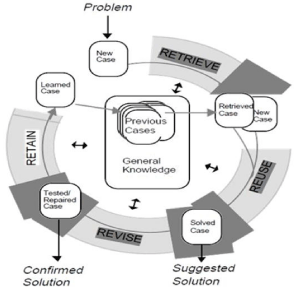
Figure 1: Cycle of CBR [6].
CBR in Medical Applications
In [7] mention that the CBR has been commonly used in medicine to diagnose and suggest treatments including Asperger sickness. An example of a CBR system in which medical use and makes decisions about the heart failure is CASEY. This system is based on 3 steps: Look for similar cases and determines the differences between the current evidence and a similar case, use the diagnosis more akin to add to the current case and if necessary modify it, as is analysed in [8]. Another system is FLORENCE; it focuses on planning health care. It consists of 3 basic planning: diagnosis, prognosis, prescription. This diagnosis is different from what is commonly used to identify a disease, this is used to obtain health status of the patient. The state of health is determined by a score. The prognosis seeks to know the health status in the future. Current patients are compared with similar patients to know the progress of the condition as in [9]. The requirement seeks to understand how to improve the health status of the patient. The answer is given by the information similar treatments patients [7].
CBR Applied to Heart Failure in Children
We proposed to apply CBR to diagnose Health failure in children because most of the time parents do not have the necessary information to know if their children have signs of this sickness. CAST instrument was used to evaluate the different areas of the child’s health, and also Gillberg’s criterion was used to group into different categories the results of CAST. If the diagnosis gives a positive result to Health failure, addition to the recommendations, it will suggest visit an expert for a complete assessment. In (Figure 2) is show a generally way the CBR scheme adapted to Heart failure in children.
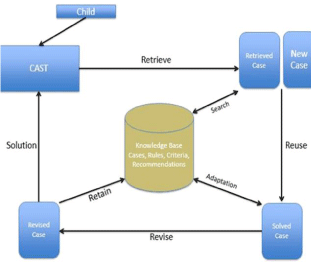
Figure 2: Scheme of CBR adapted to Heart failure in children.
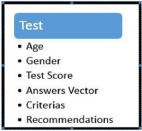
Figure 3: Representation of the case.
CBR-Health failure system
The system initially requested basic information like name, age, gender and name of the tutor, this may be a parent or a teacher. The tutor will be responsible to fill out all the information in the system. (Figure 4) shows the dialog initial information capture. Once these data are entered, the system will request to answer all questions on the form CAST. In (Figure 5) the CAST form is observed. When the form is complete, it will display a score according to the answer of the questions, you can also see which answers belong to which criteria. (Figure 6) is seen in more detail the information obtained.

Figure 4: Initial dialog capture of information in Spanish.
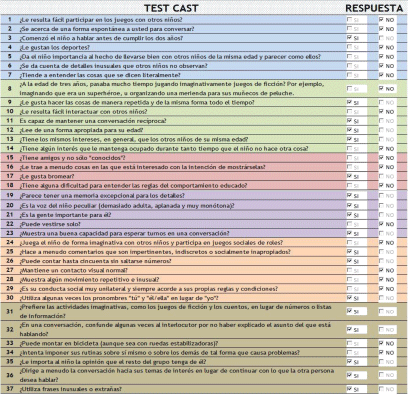
Figure 5: CAST form in Spanish.

Figure 6: Results shown in Spanish as language of users.
Subsequently, the system searches the most similar cases and compares the responses to the current case and gets the closest. Having recovered if the comparison is necessary for the solution and to reuse it in the new case, if necessary adapting for a new solution. Finally, assign these recommendations and, if it’s required, it stores in the case base. In (Figure 7) recommendations for criteria slurred speech and language is observed. We make a design of experiments to evaluate the performance of this intelligent tool and discover that many parents confuse anxiety attacks with more serious health problems including tachycardia.
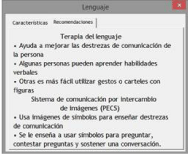
Figure 7: Recommendations for a child with health failure problems shown
in Spanish.
Conclusion
This paper has generally described Heart failure in children, their characteristics, and the differences between anxiety attack and how other specialists fail to distinguish Heart failure in children between mild heart problems. We have also described Gillberg’s criteria for the diagnosis of Heart failure in children, which were taken levels to be rated and to make recommendations. Also, we described different tools for the detection of Heart failure in children, including CAST that was used in this research. Using the CBR can help in the medical field as is proposed by [11] and [12], because while doctors treat each patient differently always use reference to previous patients to adapt at their diagnosis, the same function was performed by the CBR. It is a tool that can facilitate the diagnosis or detection of a disease or disorder without an expert’s presence, but the diagnosis itself must be validated by an expert on the subject.
References
